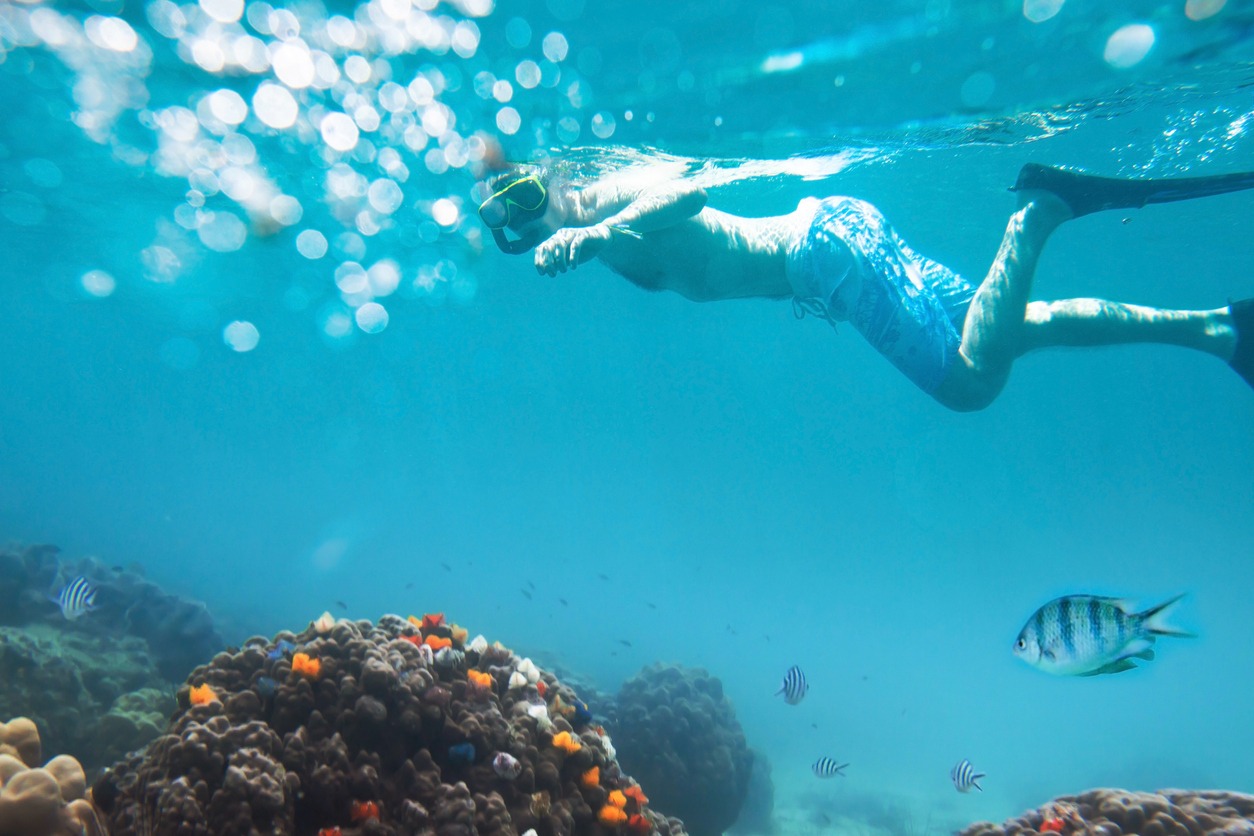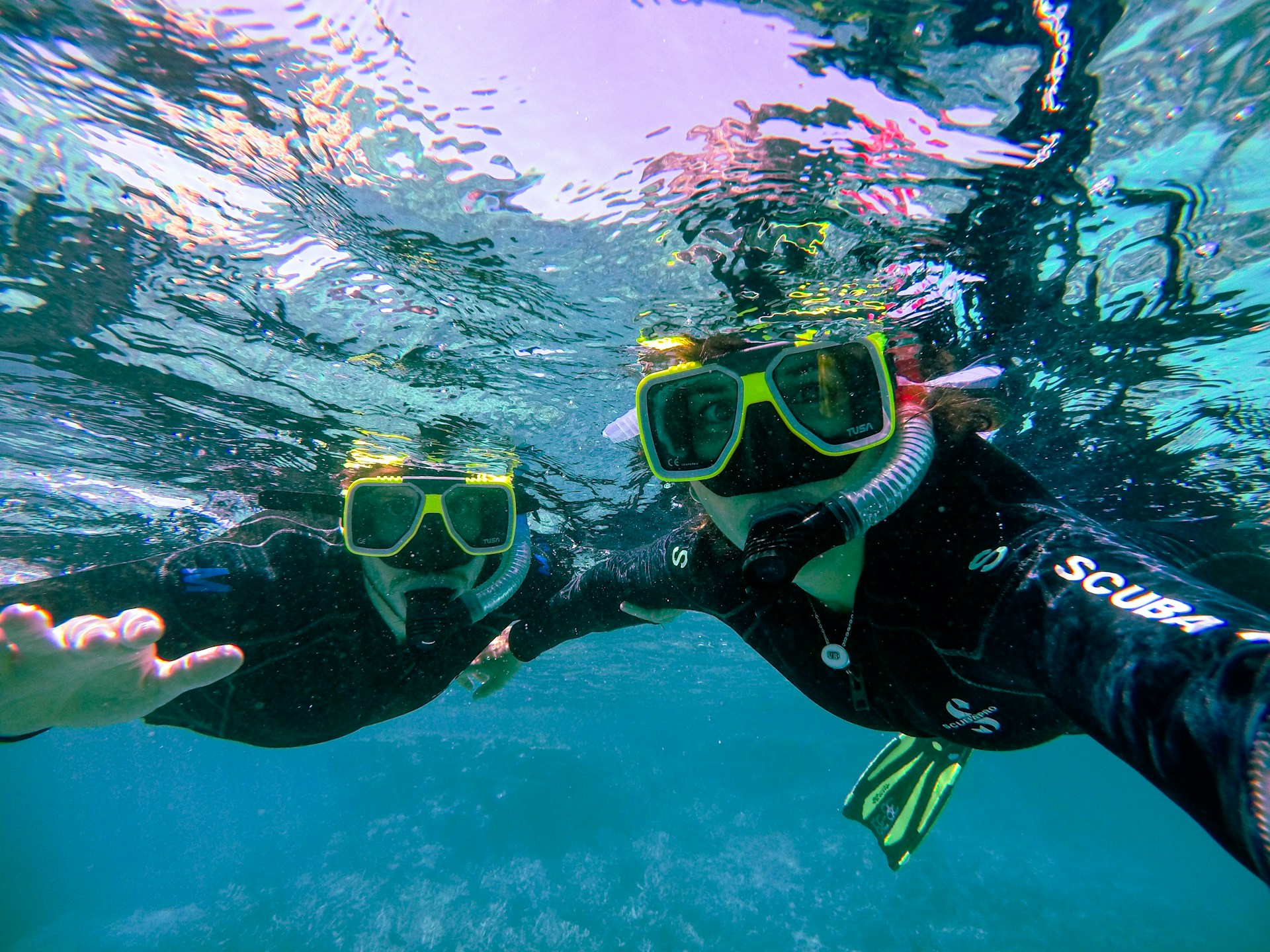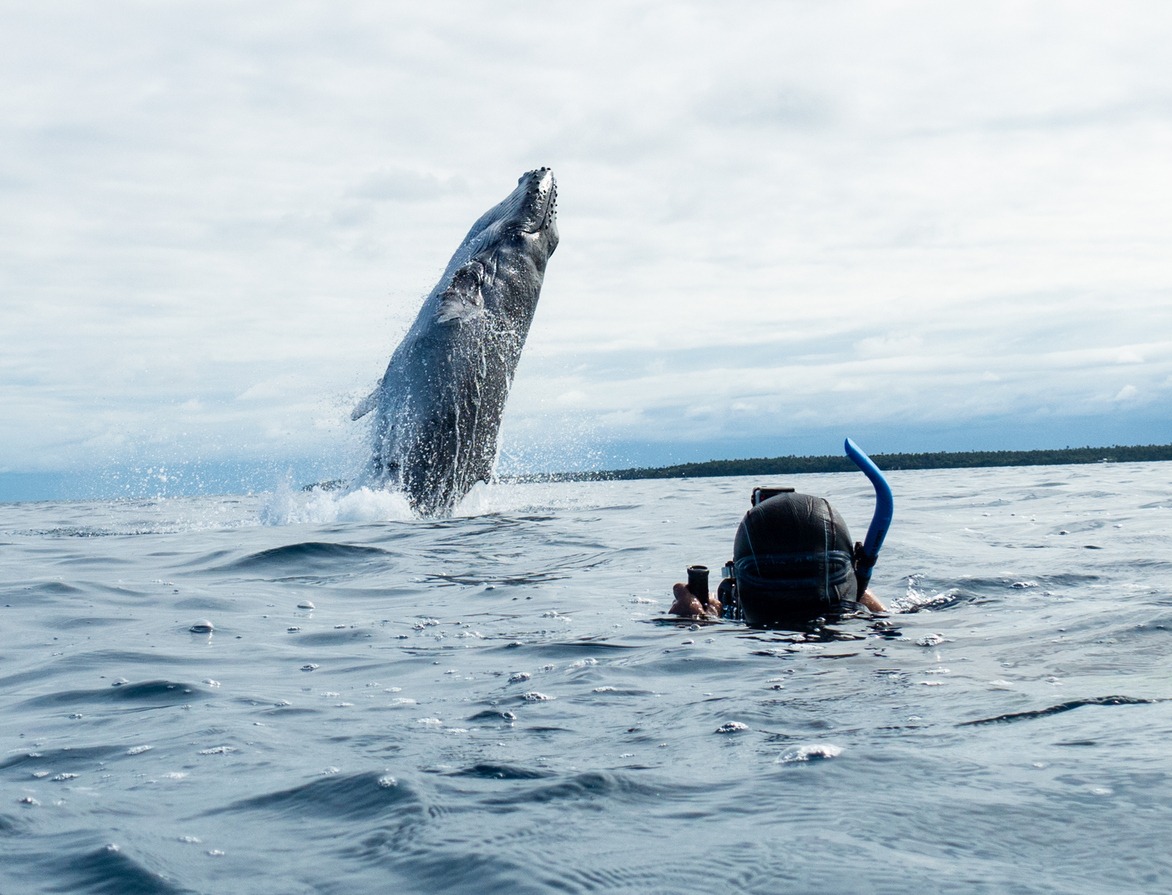A Brief History of Diving and Snorkeling: From Ancient Times to Today
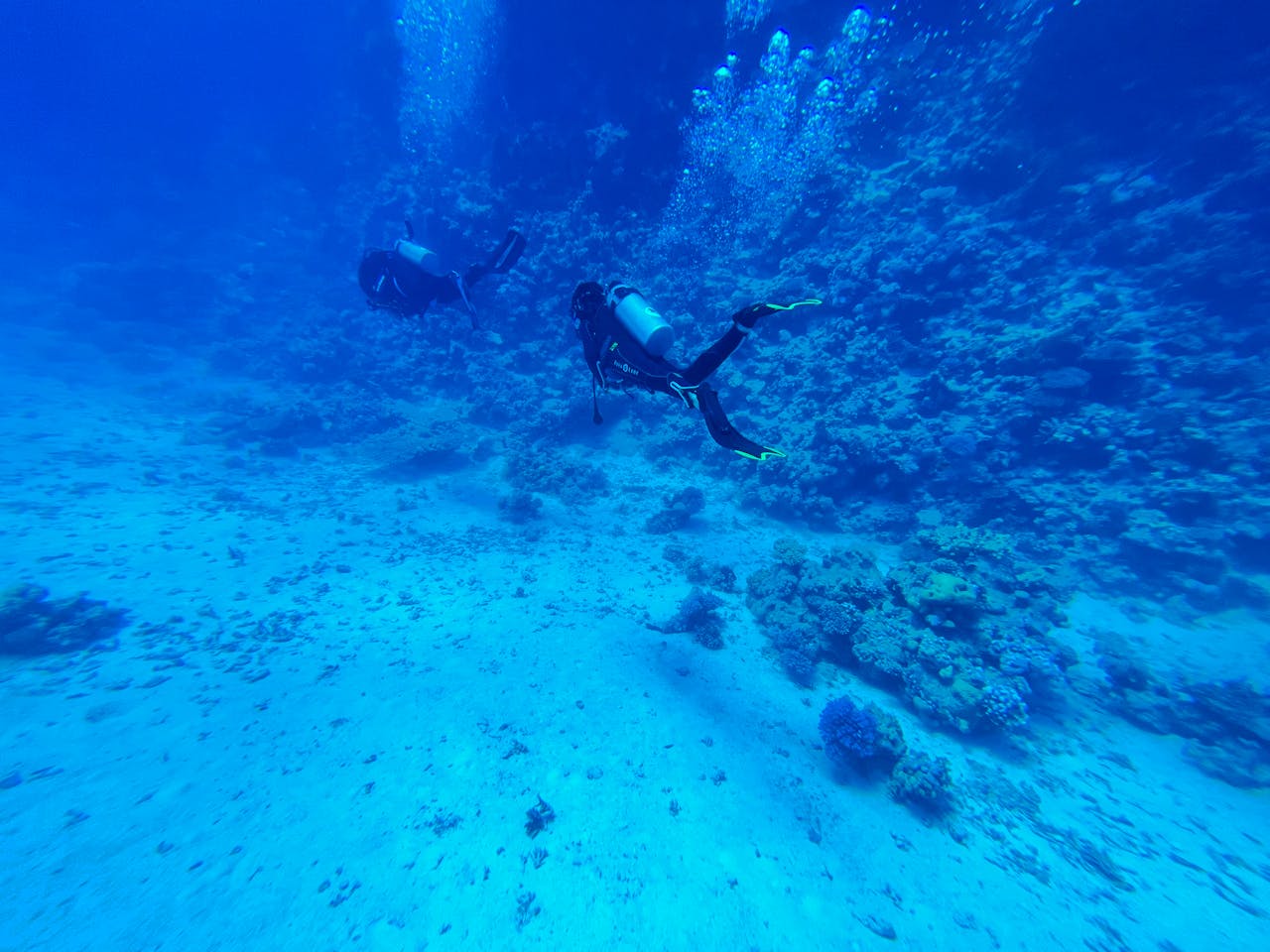
You'll be amazed to uncover that humans have been probing underwater domains for thousands of years. From ancient Cretan sponge farmers using hollow reeds as snorkels in 3,000 BC to Aristotle's diving bell concept in 333 BC, underwater exploration has a rich history. The Renaissance period saw significant advancements, including Leonardo da Vinci's sketches of diving apparatuses. The modern snorkel and diving suit evolved through centuries of innovation, leading to Jacques Cousteau's pioneering Aqualung in 1943. Today's diving and snorkeling gear continues to push boundaries, allowing you to delve into the depths with greater safety and ease. The depths of this fascinating history are just waiting to be uncovered.
Ancient Origins of Underwater Exploration
Delving into the ancient origins of underwater exploration reveals a fascinating history spanning thousands of years. You might be surprised to learn that as early as 3,000 BC, sponge farmers in Crete were already using hollow reeds as primitive snorkels. This ingenious technique allowed them to stay underwater for extended periods, revolutionizing their harvesting methods. Ancient explorers used techniques like pouring oil and holding a mouthful of air to equalize pressure, demonstrating their resourcefulness. Fast forward to 900 BC, and you'll find Assyrian explorers employing animal skins filled with air for their underwater ventures. This early form of breathing apparatus demonstrates humanity's growing desire to expand the frontiers of aquatic exploration.
Aristotle, the renowned Greek philosopher, made significant contributions to our understanding of underwater activities. In 350 BC, he observed an elephant using its trunk to breathe underwater, providing one of the earliest written accounts of snorkeling. Just 17 years later, in 333 BC, Aristotle wrote about the diving bell, a scuba-like contraption that would later evolve into modern diving equipment.
Early Diving Techniques and Tools
Building on the ingenuity of ancient adventurers, the development of early diving techniques and tools marked a significant leap in underwater investigation. As you plunge into the world beneath the waves, you'll find that the history of diving equipment stretches back millennia.
The first known diving apparatus was used by sponge farmers in Crete around 3,000 BC. They employed hollow reeds as primitive snorkels, allowing them to breathe while submerged. Later, in 900 BC, Assyrian divers took underwater exploration a step further by using air-filled animal skins to extend their time below the surface.
Aristotle's diving bell concept (333 BC), Leonardo Da Vinci's sketches of diving apparatuses (~500 AD), and the Persian development of tortoise shell goggles (1200-1300 AD) are three notable advancements in early diving technology.
These innovations laid the groundwork for modern scuba diving. Each breakthrough brought humans closer to conquering the underwater world. From simple breathing tubes to more complex air-supply systems, early divers continually pushed the boundaries of what was possible beneath the waves. Their ingenuity paved the way for the sophisticated diving equipment we use today.
Renaissance Innovations in Diving Equipment
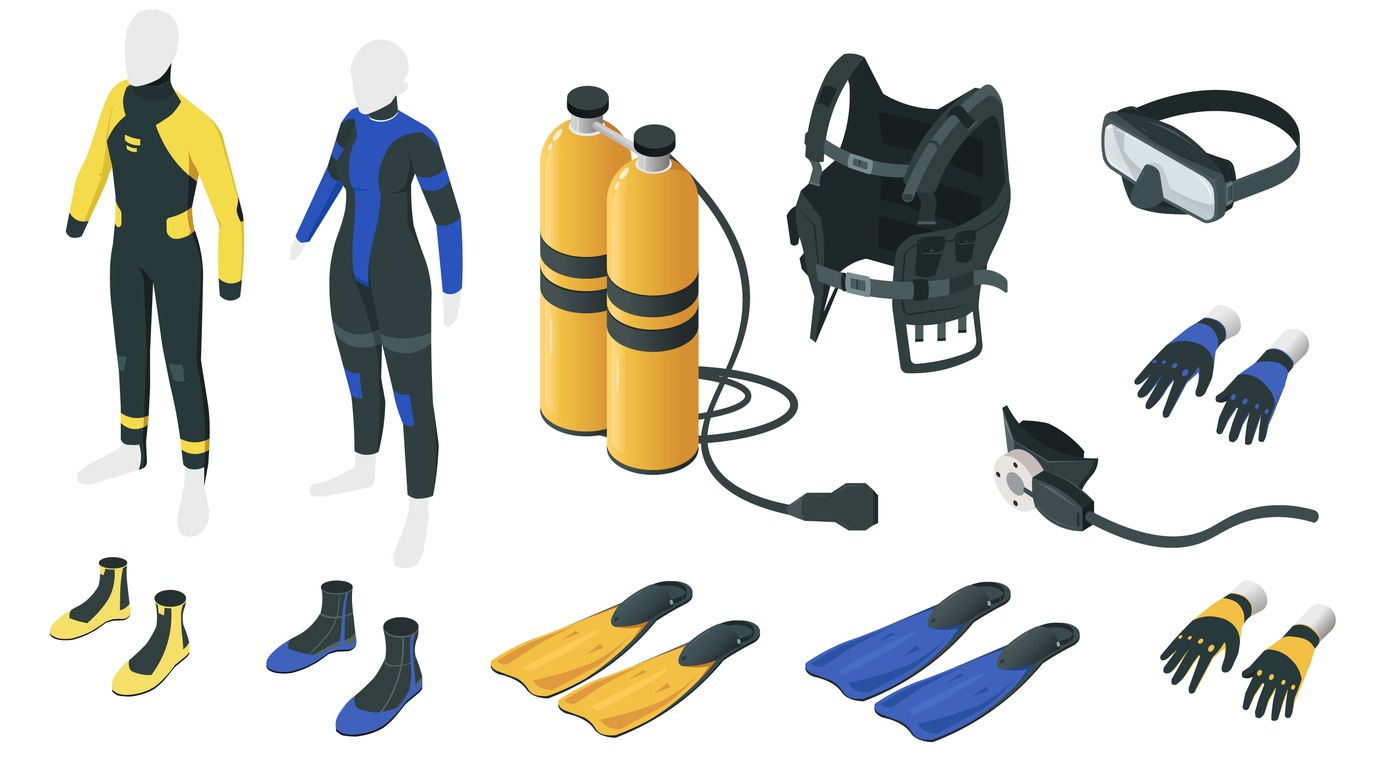
As the Renaissance ushered in a fresh chapter of scientific inquiry, underwater investigation saw extraordinary advancements. You'd be amazed at how quickly diving technology progressed during this era, building upon ancient techniques like those depicted in Assyrian bas-reliefs. The Antikythera shipwreck, dating from the second quarter of the first century BC, provided a trove of ancient artifacts recovered by divers starting in 1900 that shed light on this era of underwater exploration. Antikythera Treasures
Leonardo Da Vinci, the quintessential Renaissance man, proposed the use of air tanks for underwater breathing in his scientific drawings. This revolutionary concept laid the groundwork for future diving apparatus developments. In 1535, Guglielmo de Lorena took a significant step forward with his early diving bell design, allowing divers to submerge underwater for extended periods.
The Renaissance period's innovations in diving equipment didn't stop there. Frenchman Freminet's 1771 invention of a hydrostatic machine with a metal helmet marked another leap in diving technology. These advancements expanded the capabilities of underwater investigation and research, paving the way for modern scuba diving.
As you immerse yourself in the history of diving, you'll find that the Renaissance era's contributions to diving apparatus and air tubes were pivotal. They bridged the gap between ancient methods and the sophisticated diving equipment we use today, forever transforming our ability to explore the underwater world.
Birth of the Modern Snorkel
The Renaissance's ingenious submersion innovations set the stage for the birth of modern snorkeling equipment. In the early 20th century, the snorkel as we recognize it today emerged, revolutionizing underwater breathing for divers and swimmers alike.
The modern snorkel's development marked a significant leap forward in diving technology. Unlike traditional single-tube designs that relied on pendulum breathing, newer models introduced sophisticated features to enhance your underwater experience:
- Two-tube systems for separate inhalation and exhalation
- Advanced valve mechanisms to prevent water intrusion
- Automatic moisture and saliva release for improved safety
These innovations addressed common issues faced by divers, such as water pressure and buoyancy control. The Powerbreather, for instance, introduced a fresh air system that eliminated CO2 buildup, allowing you to swim face-down without performance loss or the need to clear water from your snorkel.
Adjustability became a key feature, with designs like the Twist Lock System accommodating various head sizes, including children's. This guaranteed a secure fit and stable positioning, crucial for maintaining proper air flow while submerging or swimming. As snorkel technology continues to evolve, you can expect even more improvements in comfort, efficiency, and safety for underwater adventurers.
Advancements in Diving Suit Technology
Several innovative advancements in submerging suit technology emerged between the 16th and 19th centuries, revolutionizing underwater investigation. You'd be amazed to learn that early submerging suits in England and France allowed divers to reach depths of up to 18 meters. During this period, metal submerging helmets were developed to withstand greater water pressure, enabling divers to explore deeper waters.
A significant breakthrough came in 1771 when British engineer John Smeaton invented the air pump. This invention paved the way for new possibilities in submerging, leading to the development of more sophisticated equipment. In 1772, Sieur Freminet created a scuba-like apparatus that recycled air, though it tragically led to his death due to oxygen depletion.
The 19th century brought further advancements with Paul Bert and John Scott Haldane's studies on the effects of water pressure on the human body. Their research contributed to the development of carbon dioxide scrubbers and regulators, indispensable components of modern submerging equipment. These innovations laid the foundation for the self-contained underwater breathing apparatus (SCUBA) we are familiar with today, allowing divers to explore the depths with greater safety and efficiency.
Emergence of Scuba Diving
While early submersion innovations laid the groundwork, it wasn't until the 1940s that scuba diving as we comprehend it today truly emerged. The breakthrough came in 1943 when Jacques Cousteau and Émile Gagnan developed the first prototype of the self-contained underwater breathing apparatus. This invention, known as the Aqualung, revolutionized underwater exploration by allowing divers to move freely without being tethered to the surface.
The term "scuba" wasn't coined until 1952, but the technology quickly gained popularity. 1. The invention of the first pressurized regulator by Cousteau and Gagnan 2. Introduction of the first commercially available scuba diving regulator in 1946 3. Rapid advancement of equipment throughout the 1950s and 1960s
These innovations paved the way for scuba diving to become a popular recreational activity. The self-contained diving suit, coupled with compressed air tanks, allowed divers to investigate underwater environments like never before. As you can imagine, this opened up a whole new world of possibilities for both scientific research and leisure pursuits.
Evolution of Snorkel Mask Designs
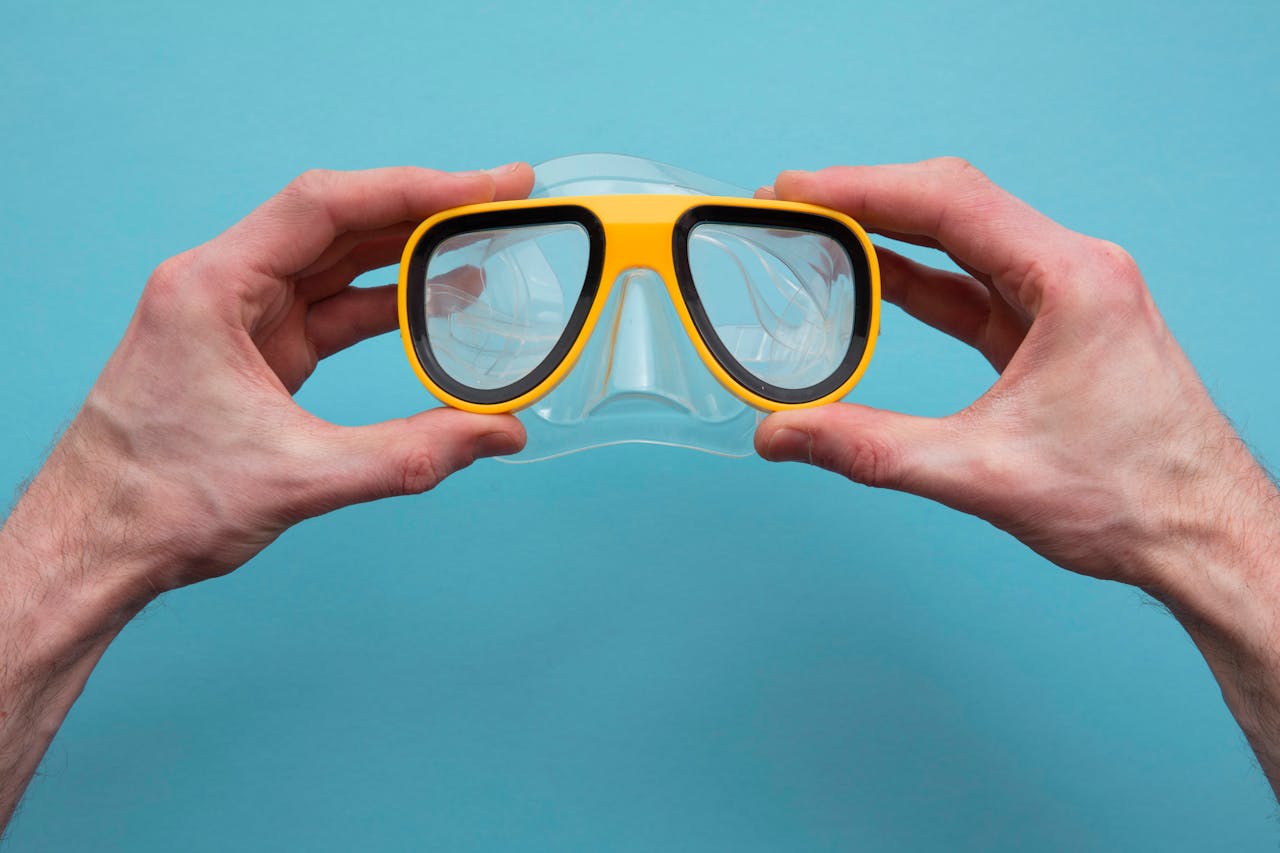
As scuba immersion technology advanced, snorkel mask designs also underwent noteworthy evolution. In 1938, French naval officer Yves Le Prieur introduced the Nautilus full-face diving mask, revolutionizing this form of underwater activity. That same year, French spearfisherman Maxime Forjot filed the first patent for a front-mounted swimmer's breathing tube, paving the way for modern snorkel designs.
The following year, Russian spearfisherman Alexander Kramarenko patented a side-mounted swimmer's breathing tube, offering divers an alternative configuration. In 1940, American Charles H. Wilen took the concept further by filing a patent for a full-face snorkel mask with two breathing tubes, enhancing the diver's ability to draw fresh air from the surface.
These innovations laid the groundwork for the modern snorkel as society comprehends it today. Hollow tubes allowed divers to breathe while keeping their faces submerged, revolutionizing underwater investigation and observation. It wasn't until 1950 that the term "snorkel" was first used by Honolulu Sporting Goods, cementing its place in diving vocabulary. The evolution of snorkel mask designs has markedly improved divers' comfort, safety, and ability to investigate underwater environments.
Scientific Breakthroughs in Diving Safety
Throughout the 19th and early 20th centuries, scientific breakthroughs revolutionized submersing safety, altering it from a perilous quest into a more secure pursuit. You'll find that the history of scuba submersing is marked by significant advancements that paved the way for modern organizations like PADI (Professional Association of Submersing Instructors) and the National Association of Underwater Instructors.
Unlike the primitive observations of the philosopher Aristotle, scientists like Paul Bert and John Scott Haldane conducted groundbreaking studies on water pressure's effects on the human body. Their work laid the foundation for safer submersing practices that SCUBA submersers now rely on. Inventors also played a crucial role in improving underwater safety:
- William James designed an iron belt holding enough air for a seven-minute submersion in 1885
- Harry Houdini created a quickly removable diver's suit in 1921
- Joseph L. Belcher filed the first patent for a submerged breathing tube in 1932
These innovations, along with the development of carbon dioxide scrubbers and regulators, substantially enhanced submersers' ability to breathe underwater for extended periods. Today's Association of Underwater Instructors builds upon this rich history of scientific progress to ensure safer submersing experiences.
Contemporary Trends in Diving Gear
Plunging enthusiasts today enjoy a wealth of state-of-the-art gear that's a far cry from the primitive equipment of yesteryear. From Alexander the Great's early designs to the world's first open-circuit systems, diving technology has come a long way. Modern gear incorporates advanced materials and streamlined designs that would amaze early pioneers who laid the groundwork for underwater exploration.
You'll find that buoyancy control devices (BCDs) have evolved remarkably since the first buoyancy control systems. Today's BCDs feature integrated weight systems and intuitive inflation mechanisms, allowing you to achieve ideal stability at the bottom of the sea. Diving computers now provide real-time data on depth, time, and decompression, enabling longer and more secure dives.
Wetsuit technology has also progressed, with flexible, insulating materials that keep you warm in cold waters. Lightweight, high-capacity scuba tanks and efficient regulators have expanded your diving range and duration. These advancements have revolutionized diver training agency practices, making underwater exploration more accessible and safer than ever before. As you immerse deeper into this hobby, you'll appreciate how far diving gear has progressed.

